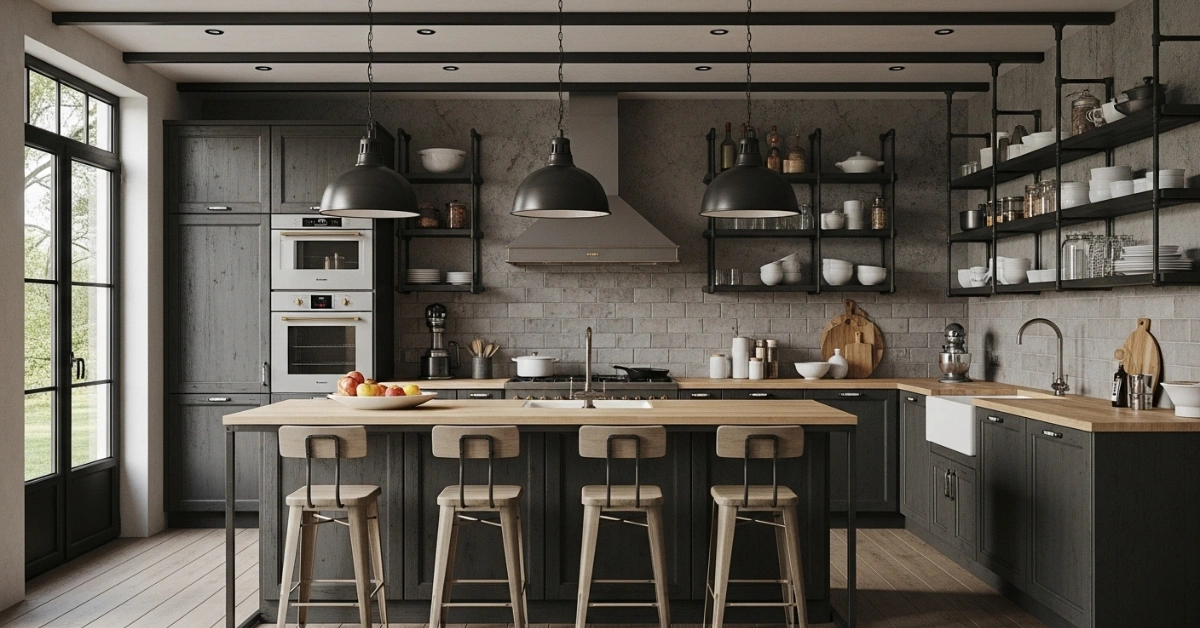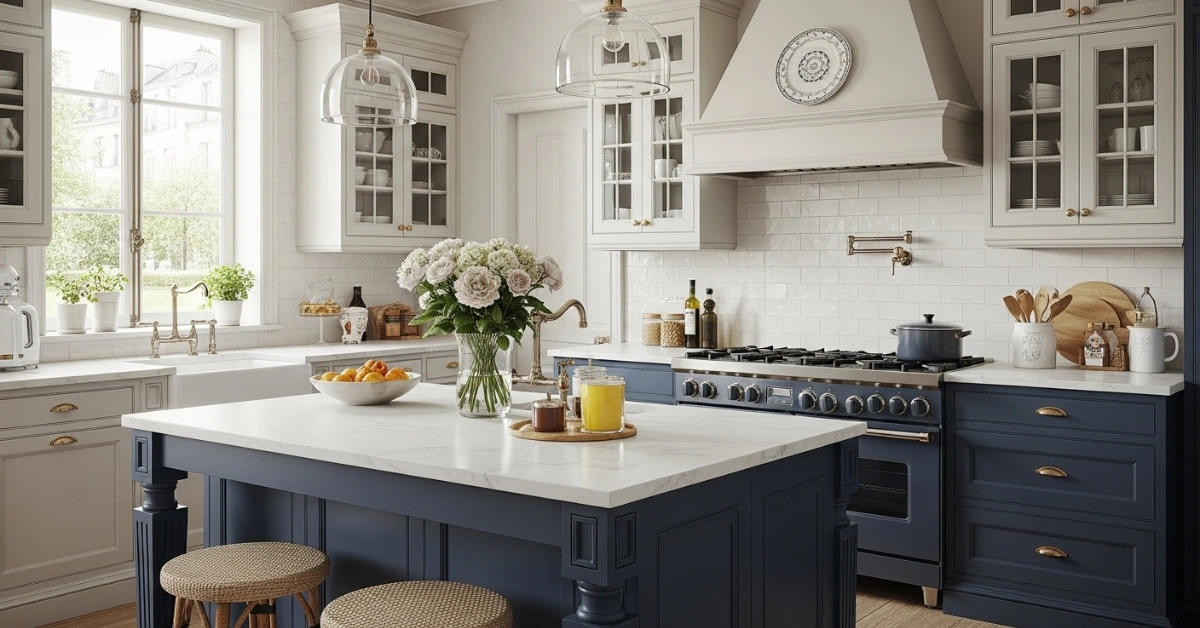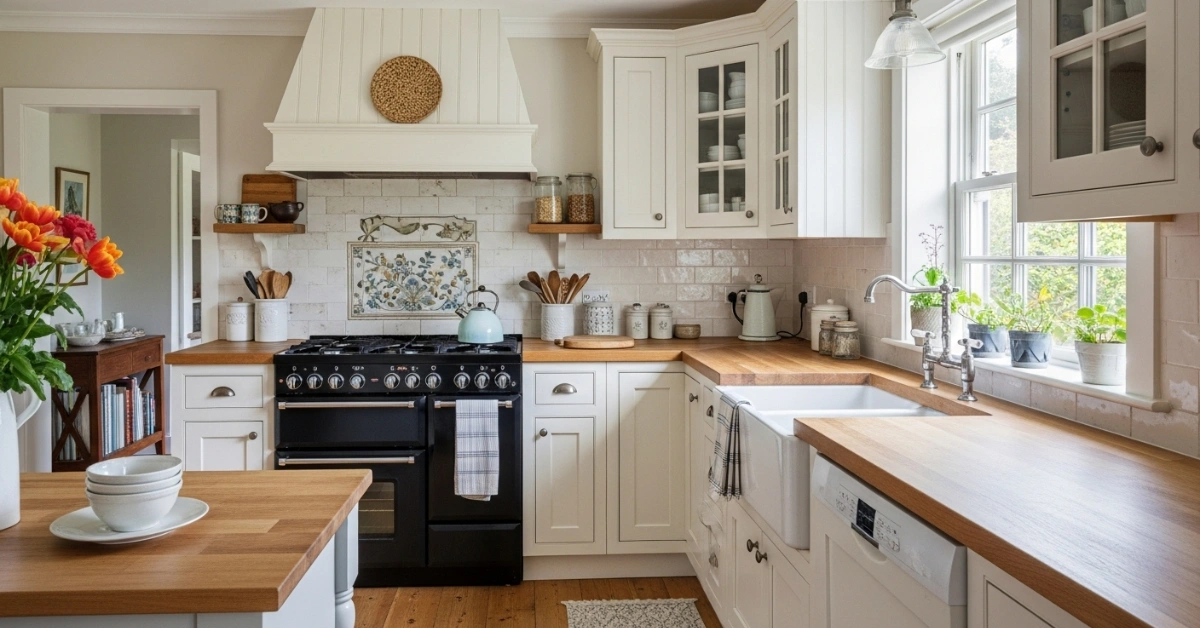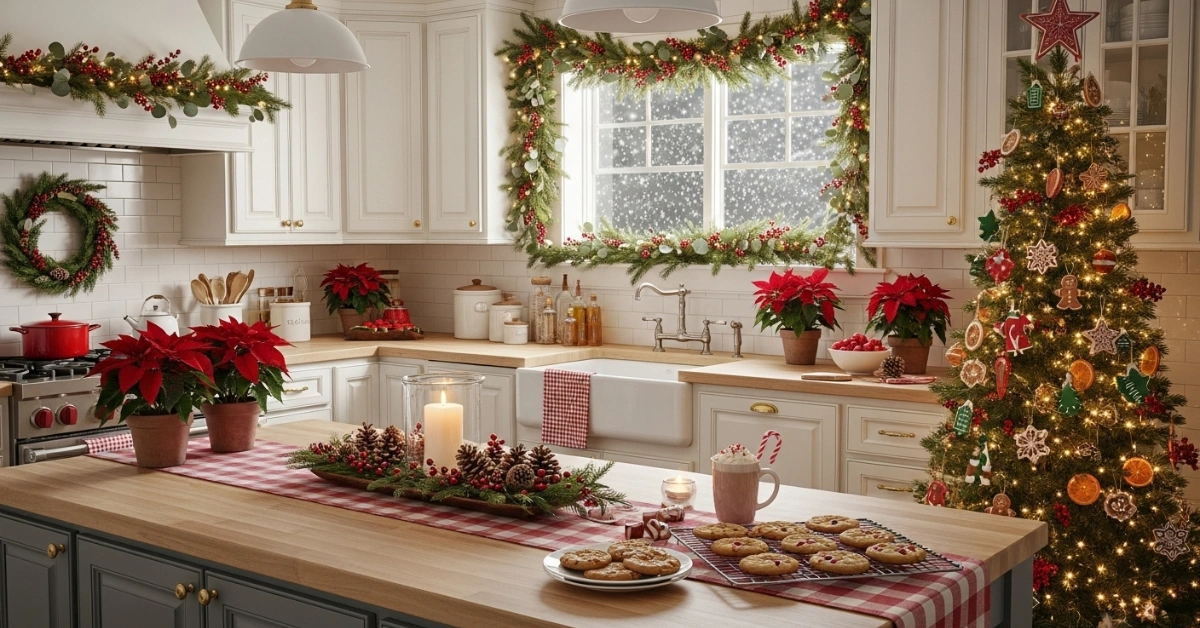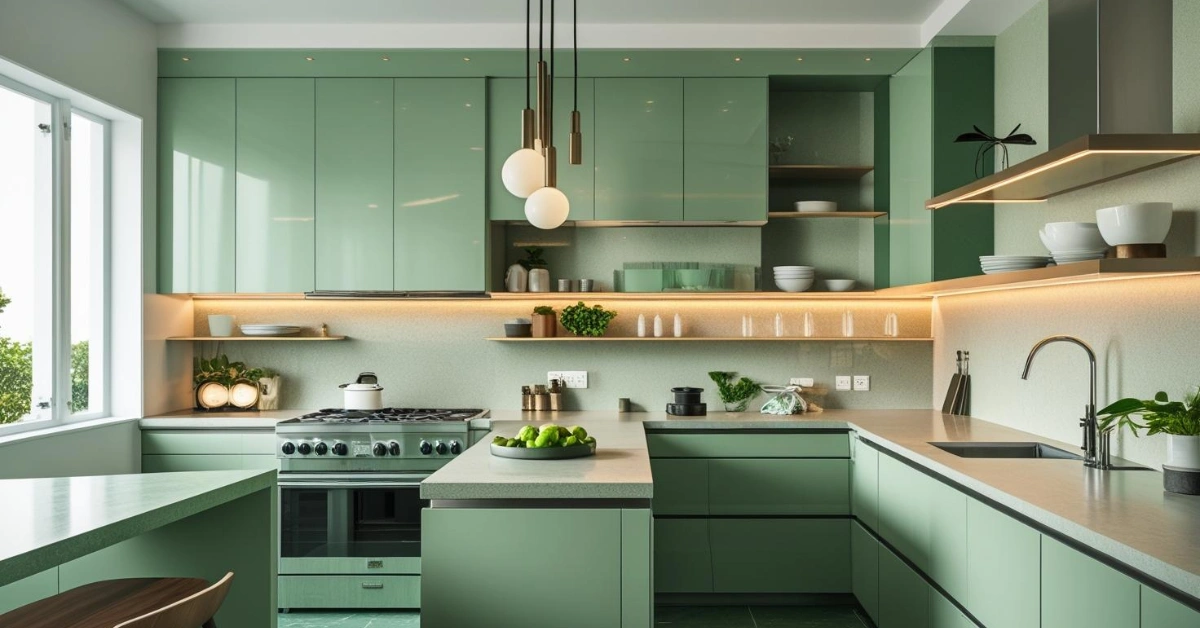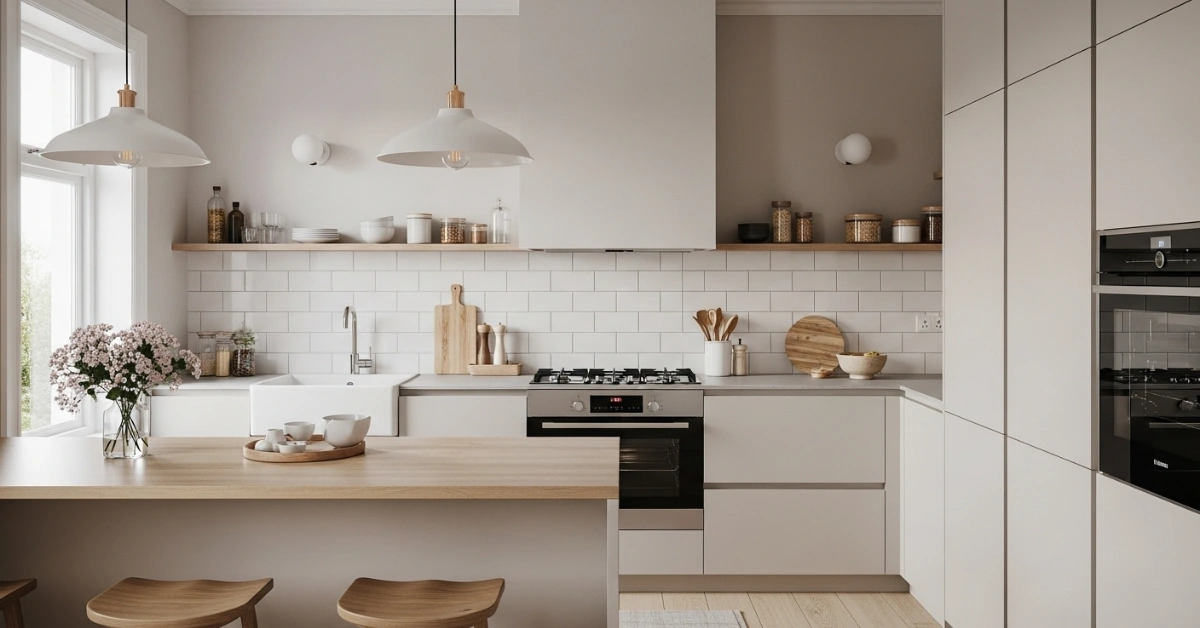Rustic Kitchen Ideas: 17 Cozy Design Tips
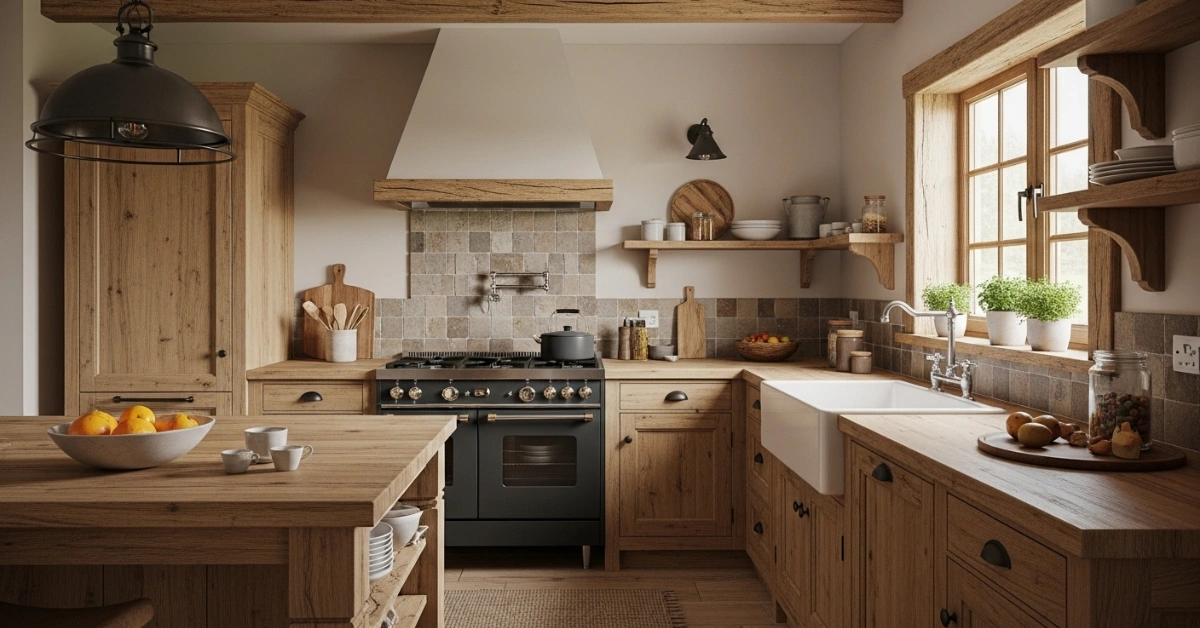
Imagine stepping into a kitchen that feels like a warm hug wooden beams overhead, earthy tones enveloping the space, and the faint aroma of fresh herbs lingering. For many, creating this inviting atmosphere feels out of reach, especially with modern designs dominating trends. The challenge is blending charm with functionality without breaking the budget or sacrificing practicality.
A rustic kitchen solves this beautifully, offering a timeless aesthetic that balances warmth, character, and usability. Whether you’re dreaming of a cozy farmhouse vibe or a rugged cabin-inspired space, this guide delivers practical ideas, expert tips, and design inspiration to craft your perfect rustic kitchen. Let’s dive into creating a space that’s both functional and full of heart.
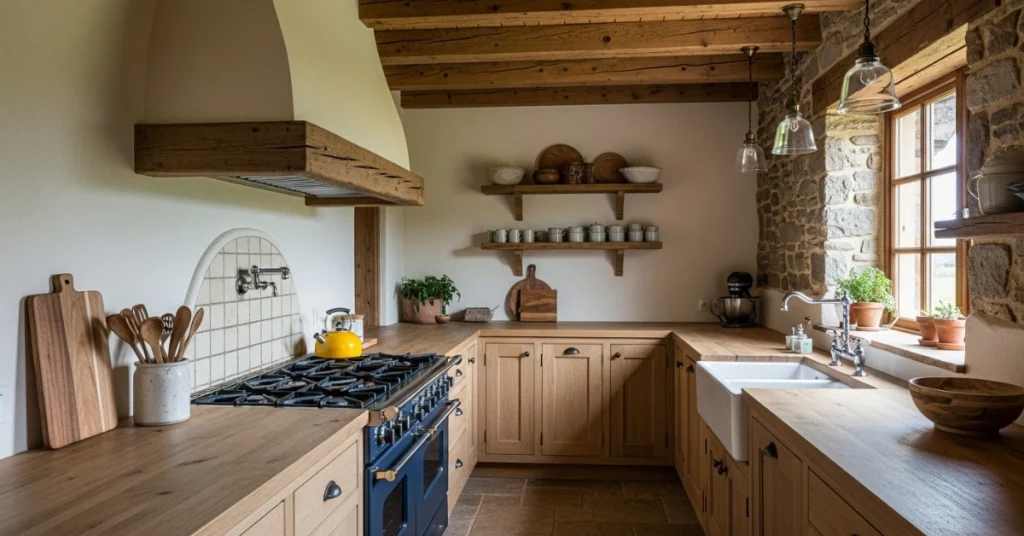
What Defines a Rustic Kitchen?
A rustic kitchen is characterized by its natural, unpolished charm, drawing inspiration from nature and traditional craftsmanship. Think exposed wood, stone accents, and earthy colors that evoke a sense of simplicity and warmth. According to a 2023 survey by Houzz, 14% of homeowners renovating their kitchens leaned toward rustic or farmhouse styles, proving its enduring appeal.

Key Elements of Rustic Kitchen Design
- Natural Materials: Wood, stone, and brick dominate, often left in their raw or lightly finished state.
- Neutral and Earthy Tones: Think warm browns, soft creams, and muted greens.
- Textured Finishes: Rough-hewn beams, distressed cabinets, and matte surfaces add character.
- Vintage Accents: Antique hardware, mason jars, or reclaimed decor pieces enhance authenticity.

Interior designer Sarah Thompson notes, “A rustic kitchen isn’t just about aesthetics, it’s about creating a space that feels lived-in and welcoming, like it’s been loved for generations.”
Benefits of a Rustic Kitchen
Why choose a rustic kitchen over sleek, modern designs? Here are some compelling reasons:
- Timeless Appeal: Unlike trendy styles that fade, rustic kitchens remain relevant, blending well with various home aesthetics.
- Versatility: They suit small apartments, sprawling farmhouses, or suburban homes.
- Warmth and Comfort: Natural materials and soft colors create an inviting atmosphere.
- Sustainability: Using reclaimed wood or eco-friendly materials aligns with green living trends.

In my own home, transforming a sterile kitchen into a rustic haven with reclaimed barn wood shelves and vintage pendant lights made it the heart of family gatherings. The change wasn’t just visual, it shifted how we used and felt in the space.
Designing Your Rustic Kitchen: Practical Tips and Ideas
1. Choose the Right Color Palette
Rustic kitchens thrive on earthy, muted tones that reflect nature. Opt for warm beiges, soft grays, or sage greens as base colors, with pops of terracotta or mustard for contrast. Avoid overly bright or synthetic hues to maintain authenticity.

- Tip: Paint cabinets in creamy white or soft taupe and pair with a wooden countertop for balance.
- Example: A sage green island paired with oak cabinets creates a grounded, cohesive look.
2. Incorporate Natural Wood Elements
Wood is the backbone of rustic kitchen design. Use it for cabinets, open shelves, or ceiling beams. Reclaimed or distressed wood adds character, while lighter stains keep the space airy.
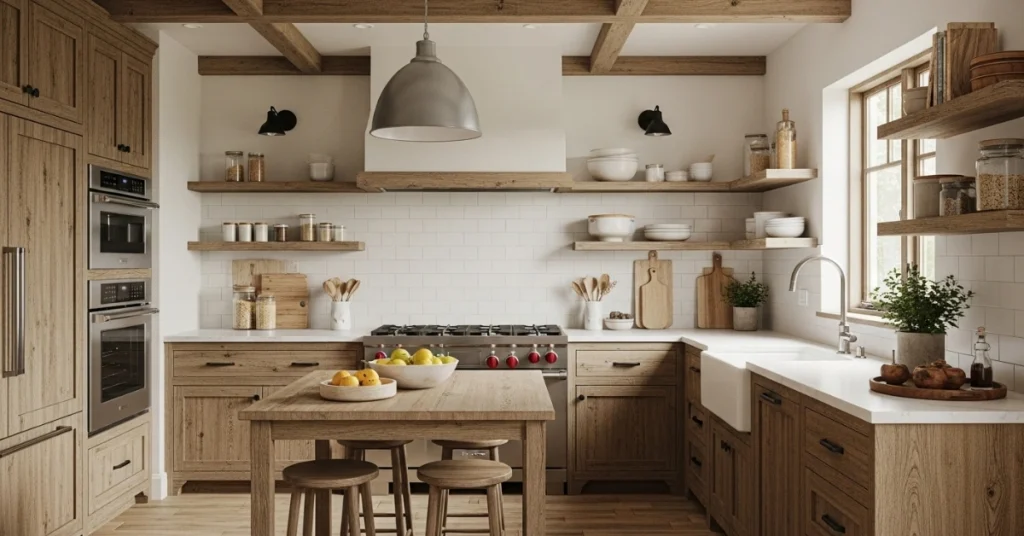
- Tip: Source reclaimed wood from local salvage yards to save costs and add a story to your kitchen.
- Designer Insight: “Reclaimed wood isn’t just sustainable, it brings a unique patina that new materials can’t replicate,” says designer Mark Evans.
3. Add Stone or Brick Accents
A stone backsplash or exposed brick wall instantly elevates the rustic vibe. Natural stone like slate or limestone works well, while brick adds a cozy, farmhouse feel.

- Cost-Saving Idea: Use brick veneer for a budget-friendly alternative to full brick walls.
- Example: A whitewashed brick backsplash behind a farmhouse sink creates a focal point without overwhelming the space.
4. Select Rustic Kitchen Countertops
Countertops set the tone for functionality and style. Butcher block or reclaimed wood countertops are budget-friendly and authentic, while granite or soapstone offers durability with a natural look.
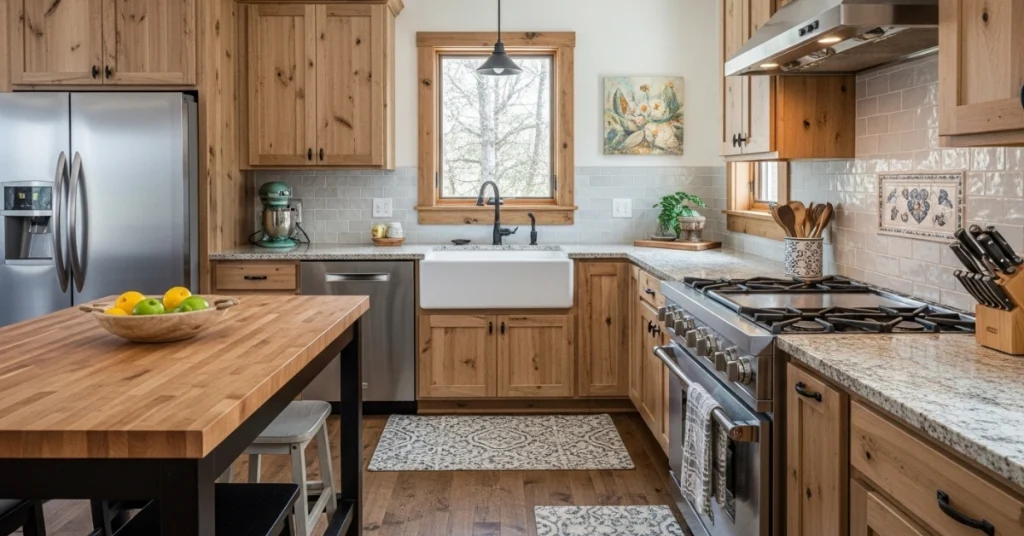
| Material | Pros | Cons | Cost (per sq. ft.) |
|---|---|---|---|
| Butcher Block | Warm, affordable, easy to repair | Requires regular sealing | $40–$100 |
| Granite | Durable, natural veining | Expensive, needs professional install | $80–$200 |
| Soapstone | Soft texture, heat-resistant | Prone to scratches | $70–$120 |
5. Install a Farmhouse Sink
A deep, white ceramic farmhouse sink is a rustic kitchen staple. Its wide basin is practical for soaking dishes or preparing large meals, and its classic look ties the design together.
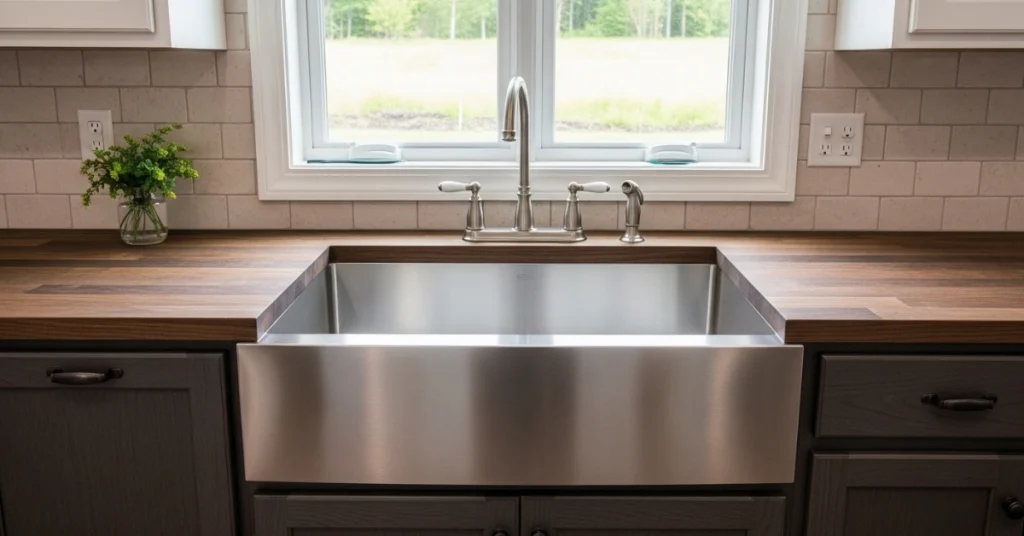
- Tip: Pair with a vintage-style faucet in brushed nickel or oil-rubbed bronze for added charm.
- Real-World Example: In a friend’s rural home, a farmhouse sink became the centerpiece, making even mundane tasks like washing dishes feel special.
6. Use Open Shelving for Display
Swap upper cabinets for open shelves to showcase vintage dishware, mason jars, or woven baskets. This approach keeps the space airy and functional while adding personality.
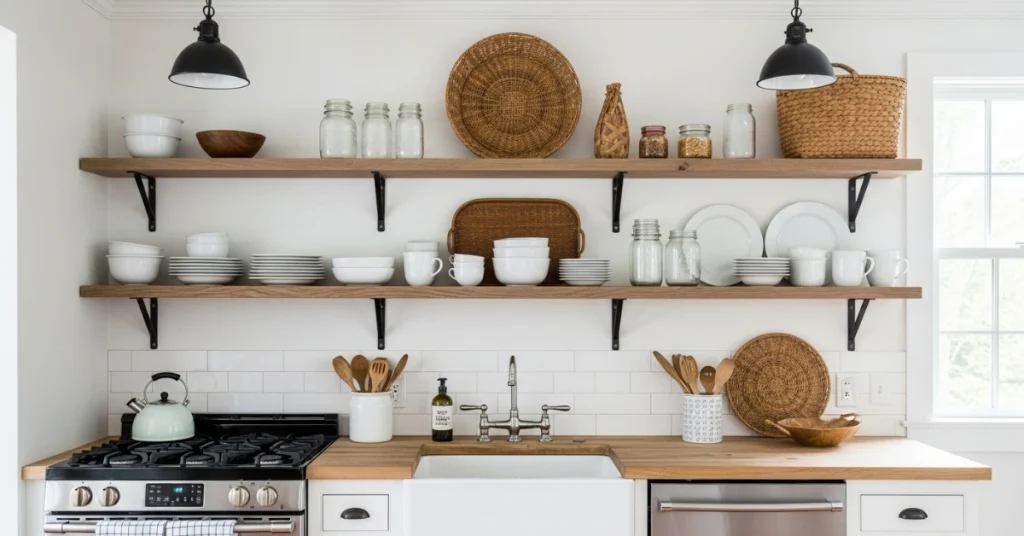
- Tip: Mix wood and metal shelves for a modern-rustic twist.
- Styling Idea: Arrange ceramic pitchers, wooden bowls, and fresh herbs for a lived-in look.
7. Incorporate Vintage Lighting
Lighting sets the mood in a rustic kitchen. Opt for wrought iron chandeliers, mason jar pendants, or Edison bulb fixtures to enhance the ambiance.

- Example: A trio of pendant lights over an island creates a warm glow for evening gatherings.
- Designer Tip: “Layer lighting with under-cabinet strips and a statement chandelier to balance function and charm,” advises Emily Carter, interior designer.
8. Add Textured Textiles
Rustic kitchens benefit from soft textiles like linen curtains, woven rugs, or burlap table runners. These add warmth and break up the hardness of wood and stone.
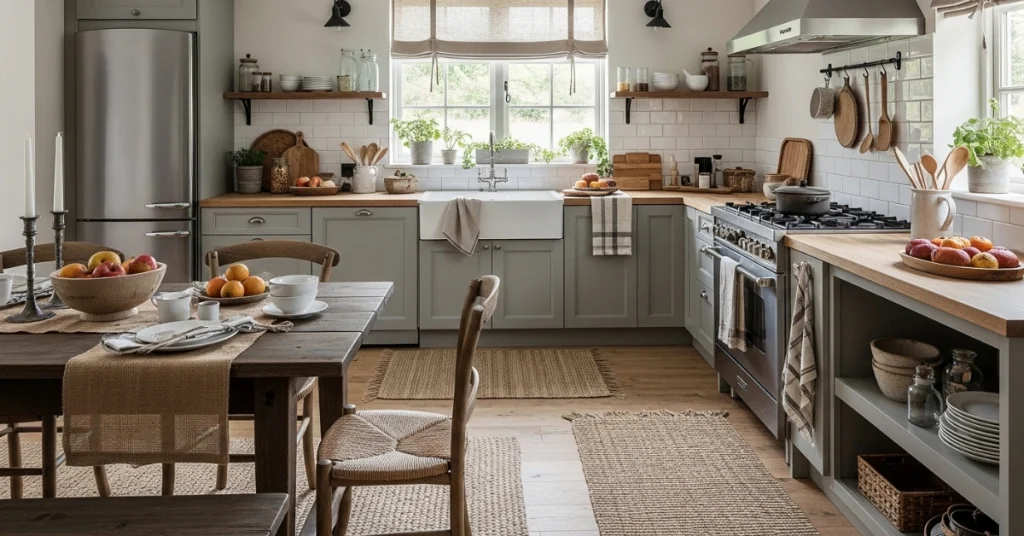
- Tip: Choose neutral or muted patterns to avoid clashing with the natural palette.
- Example: A striped linen runner on a wooden dining table adds subtle texture without overpowering.
9. Embrace Imperfection with Distressed Finishes
Distressed cabinets or furniture give your kitchen a timeworn, authentic feel. Sand down edges or use chalk paint for a DIY distressed look.

- Tip: Focus distressing on high-touch areas like cabinet corners for a natural effect.
- Cost-Saving Hack: Repaint existing cabinets with a distressed finish instead of replacing them.
10. Create a Cozy Dining Nook
If space allows, add a small dining nook with a wooden table and mismatched chairs. This fosters a communal vibe, perfect for family meals or coffee chats.
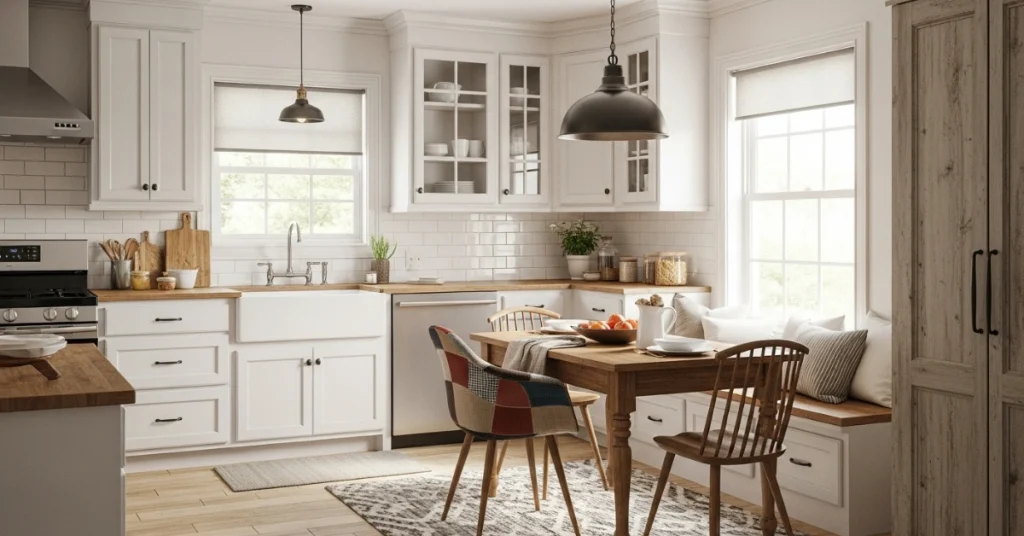
- Example: A reclaimed wood table paired with vintage metal chairs creates an eclectic, inviting nook.
- Designer Insight: “A dining nook should feel like an extension of the kitchen’s soul, functional yet full of character,” says designer Laura Bennett.
Rustic Kitchen Layout Ideas
The layout of your rustic kitchen impacts both aesthetics and functionality. Here are three popular options:
U-Shaped Kitchen
- Best For: Medium to large spaces
- Why It Works: Maximizes counter space and storage, ideal for avid cooks.
- Rustic Twist: Add a wooden island in the center for prep and casual dining.

Galley Kitchen
- Best For: Small spaces or apartments
- Why It Works: Efficient use of space with a cozy, intimate feel.
- Rustic Twist: Use open shelves and a butcher block countertop to enhance warmth.

Open-Plan Kitchen
- Best For: Modern homes or entertaining
- Why It Works: Connects the kitchen to living areas for a spacious, social vibe.
- Rustic Twist: Incorporate a large farmhouse table as a transition between spaces.

Decorating Your Rustic Kitchen: Small Details, Big Impact
11. Use Vintage Hardware
Swap modern knobs for antique brass or iron handles. These small details add authenticity without high costs.

- Tip: Shop flea markets or online marketplaces like Etsy for unique finds.
- Example: Oil-rubbed bronze knobs on white cabinets create a striking contrast.
12. Add Greenery
Fresh herbs in terracotta pots or a small indoor garden bring life to a rustic kitchen. They’re functional for cooking and enhance the natural aesthetic.
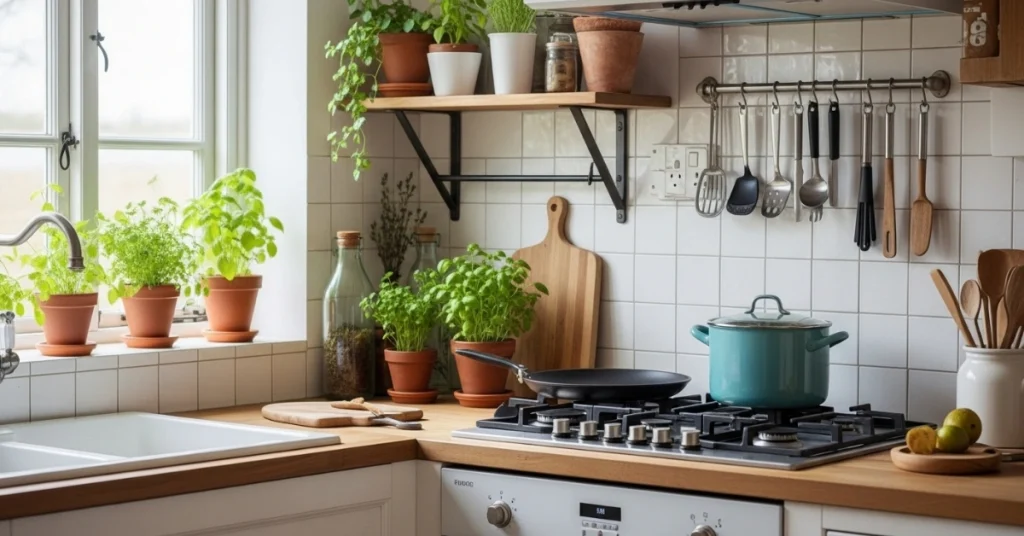
- Tip: Place basil or rosemary near a sunny window for easy access.
- Example: A windowsill herb garden in mismatched pots adds charm and practicality.
13. Display Rustic Dishware
Showcase ceramic plates, enamel mugs, or wooden bowls on open shelves or in glass-fronted cabinets. These pieces double as decor and functional items.
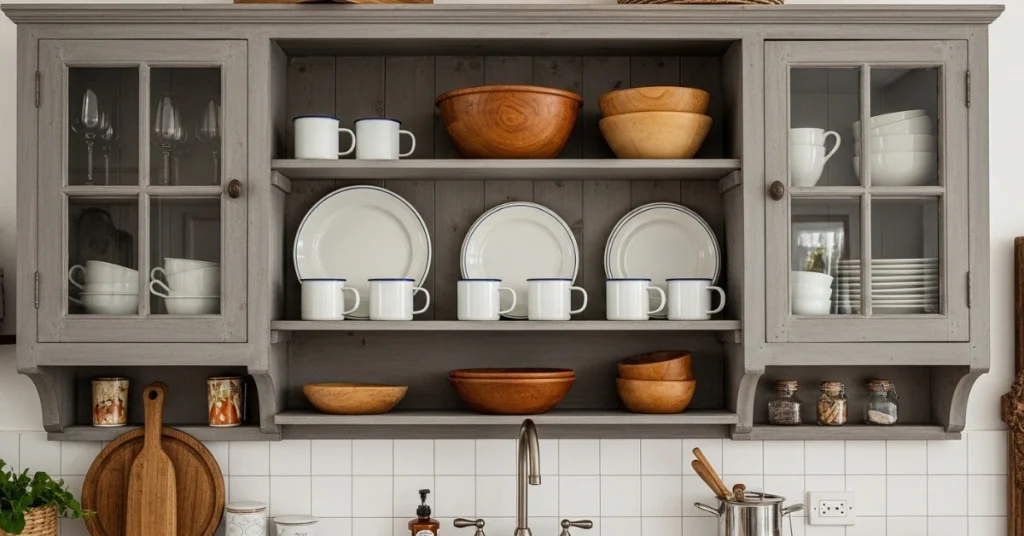
- Tip: Mix vintage and modern dishware for an eclectic look.
- Designer Insight: “Curate dishware like you’re telling a story—each piece should feel personal,” says designer Hannah Lee.
14. Incorporate Woven Baskets
Baskets are perfect for storing linens, produce, or utensils while adding texture. Place them on shelves or under counters for easy access.
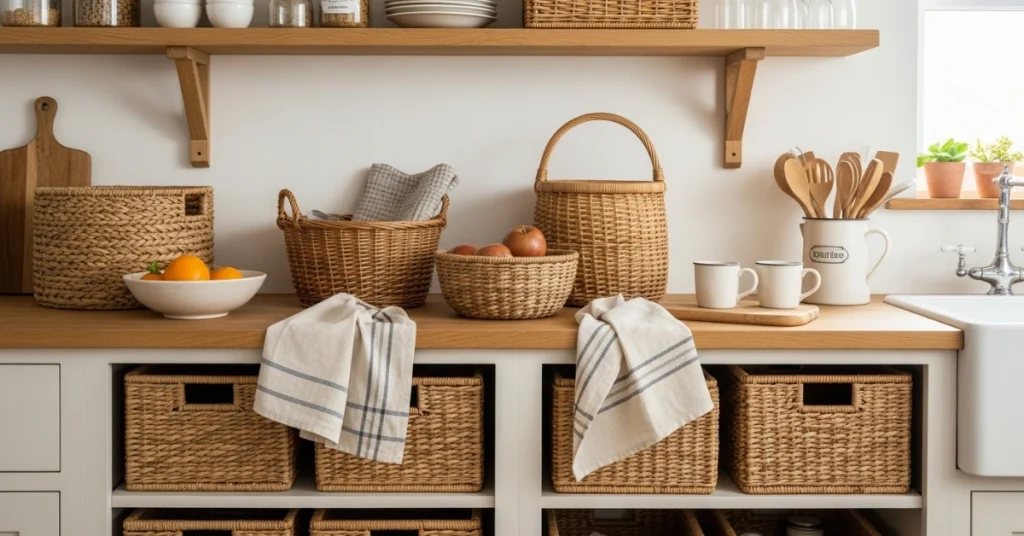
- Tip: Opt for natural materials like seagrass or wicker for authenticity.
- Example: A large wicker basket under a console table holds extra blankets for cozy evenings.
15. Hang a Chalkboard
A chalkboard wall or panel adds a playful, functional element. Use it for grocery lists, recipes, or family notes.

- Tip: Frame a chalkboard with reclaimed wood for a cohesive rustic look.
- Example: A chalkboard backsplash in a small kitchen adds charm without cluttering space.
Rustic Kitchen Inspiration: Real-World Examples
Example 1: The Cozy Farmhouse
In a Vermont home, the owners transformed their dated kitchen using reclaimed barn wood for cabinets and a butcher block island. A white ceramic sink and vintage pendant lights tied the space together, creating a warm, inviting hub for family gatherings.

Example 2: The Urban Rustic Retreat
In a Chicago apartment, a small galley kitchen became a rustic haven with open oak shelves, a slate backsplash, and brass hardware. The owner added a small bistro table for dining, proving rustic works in compact spaces.
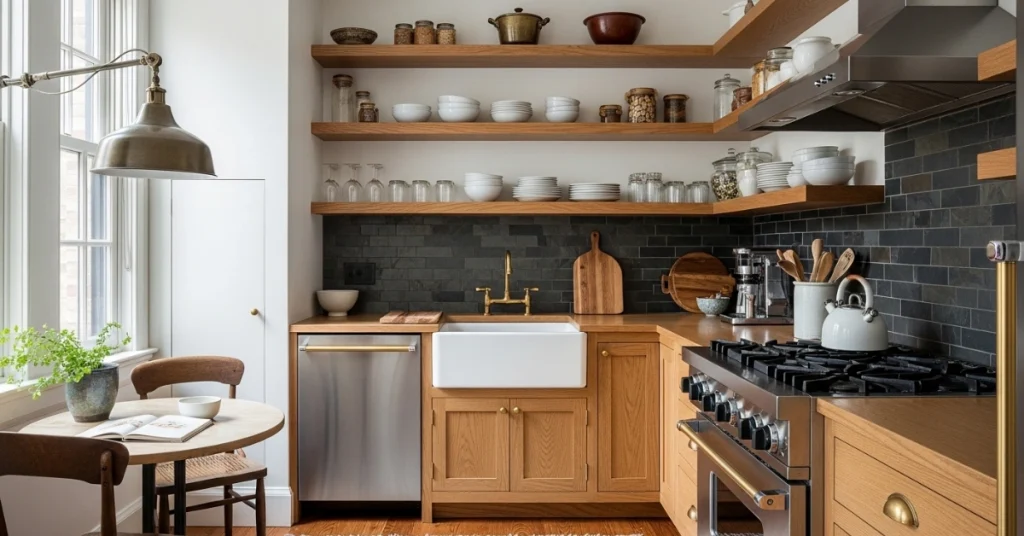
Example 3: The Modern-Rustic Blend
A California home blended rustic and modern with a sleek soapstone countertop, distressed white cabinets, and a brick accent wall. The result was a space that felt both timeless and contemporary.
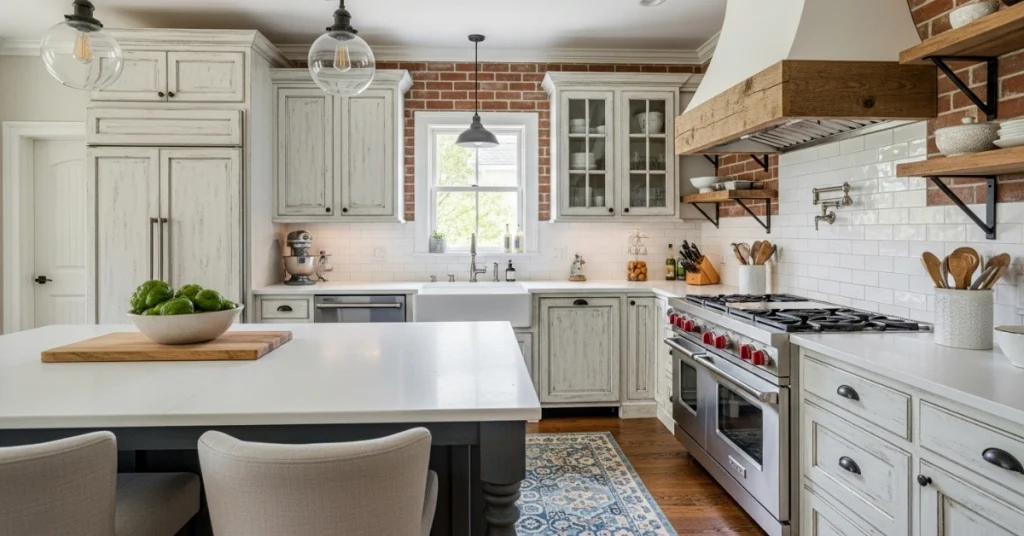
Common Mistakes to Avoid in Rustic Kitchen Design
- Overloading with Decor: Too many knickknacks can make the space feel cluttered. Stick to a few statement pieces.
- Ignoring Functionality: Ensure ample lighting and storage to keep the kitchen practical.
- Using Inauthentic Materials: Plastic or overly polished finishes can cheapen the rustic aesthetic.
- Neglecting Maintenance: Wood and stone require regular care to maintain their beauty.
Budget-Friendly Rustic Kitchen Ideas
Creating a rustic kitchen doesn’t have to break the bank. Here are some cost-saving tips:
- Repurpose Existing Furniture: Sand and repaint old cabinets for a distressed look.
- Shop Secondhand: Flea markets and thrift stores are goldmines for vintage decor.
- DIY Backsplash: Use peel-and-stick tiles mimicking stone or brick for a quick, affordable update.
- Focus on Small Changes: Swap hardware or add open shelves for big impact with minimal cost.
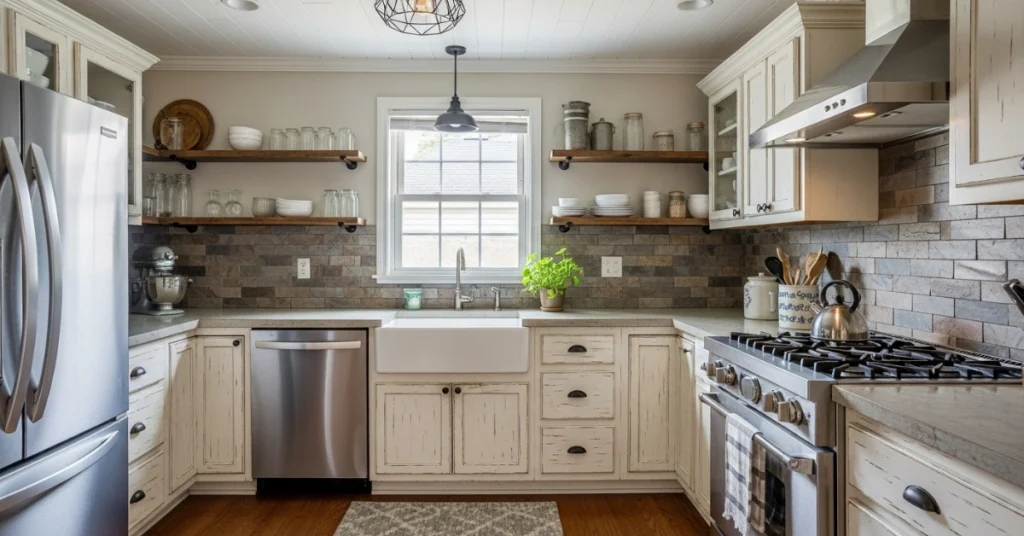
Maintaining Your Rustic Kitchen
To keep your rustic kitchen looking its best:
- Seal Wood Surfaces: Apply food-safe sealant to butcher block countertops every 6–12 months.
- Clean Stone Regularly: Use pH-neutral cleaners to avoid damaging natural stone.
- Polish Hardware: Wipe down brass or iron fixtures to prevent tarnishing.
- Refresh Textiles: Wash or replace curtains and rugs to keep the space fresh.

Conclusion: Create Your Dream Rustic Kitchen Today
A rustic kitchen is more than a design choice it’s a lifestyle that celebrates warmth, simplicity, and connection. By blending natural materials, earthy tones, and thoughtful details, you can craft a space that’s both functional and full of character. Whether you’re starting from scratch or refreshing an existing kitchen, these 35 ideas offer a roadmap to a cozy, timeless haven.
Ready to transform your kitchen? Start small with vintage hardware or open shelves, or go bold with a stone backsplash or farmhouse sink. Share your rustic kitchen journey in the comments, or contact a local designer to bring your vision to life. Your dream kitchen awaits!

